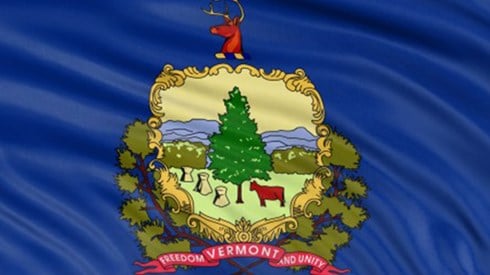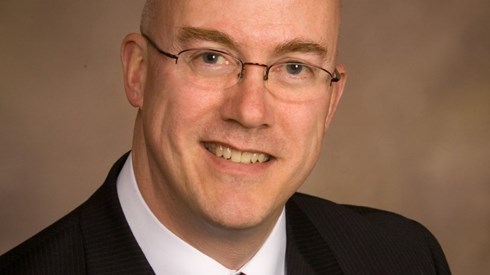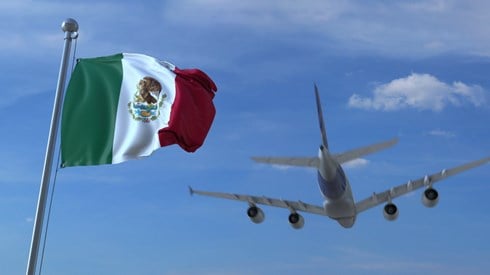Vermont's Captive Scene Attracts Growing Interest from China and Mexico

August 08, 2019

Over 1,000 people attended this year's Vermont Captive Insurance Association (VCIA) annual conference, held in Burlington, Vermont, on August 5–8. The event drew attendees from nearly every state and 11 countries.
According to VCIA President Rich Smith, between 12 and 15 percent of attendees were first-time captive owners, while, overall, captive owners accounted for 28 percent of the event's total attendees.
The event's captive immersion session, a first-time undertaking spearheaded by Ian Davis, director of financial services with Vermont's Department of Financial Regulation, consisted of a full afternoon of introductory sessions with each of the major service providers. This was an attraction for captive owners, with approximately 120 people participating in this new conference feature.
In response to surveys from prior years' events asking for increased networking opportunities, VCIA extended the length of its opening night reception to 2 full hours, which brimmed over with eager networkers.
Milliman's Mike Meehan, this year's conference chair, supported by a team of 40 people, aimed to create a captive conference with a cutting-edge focus addressing the latest captive developments and issues. Identifying the next generation of talent and leaders is at the top of that list, according to Mr. Meehan.
VCIA said a number of organizations (Strategic Risk Solutions, the National Risk Retention Association, and the Vermont Department of Financial Regulation) have worked hard to bring students to the conference. As in years past, this year's young professionals forum provided a venue to support and grow the next generation of captive industry leaders.
With the key theme of innovation, the event also provided sessions covering InsurTech, blockchain, artificial intelligence (AI), and the use of other technology.
"The captive insurance world is changing quickly," said Mr. Smith, "to keep pace with technological changes in the insurance industry. Drones and artificial intelligence technology are increasingly being used to assist risk managers in pricing and claims management."
The Numbers—a Very Healthy Captive Market
Sandy Bigglestone, director of captive insurance with Vermont's Department of Financial Regulation, said Vermont licensed 25 captives in 2018 and has licensed 7 new captives so far in 2019. In all, the domicile has licensed 1,144 captives since the 1981 passage of its captive statute.
Mr. Davis said that 2019's 7 new captives are in line with 13 new captives at the same time last year and 9 during the same period in 2017. Both 2017 and 2018 ended the year with 24 and 25 new captives respectively, with the majority of formation activity occurring during the third and fourth quarters.
In general, Mr. Davis said that current captive growth reflects what is happening in the industry globally, whether that is mergers and acquisitions, increased scrutiny, or competition from other domiciles. Vermont expects 2019 to end on par with recent years, as Vermont continues to attract quality companies.
Of the seven newly licensed captives, by industry category, two were real estate, three were insurance, one was professional service, and one was transportation. See the department's "Why Vermont?" page for a more comprehensive view.
Broken out by type of captive, two were sponsored captives, three were pure captives, one was a special purpose financial insurer, and one was an industrial insured. Vermont has held steady with 581 total licensed captives. This number includes active and dormant captives but excludes cell captives.
Of note, Ms. Bigglestone said, the domicile has 36 sponsored captive insurance companies with a good deal of growth in this area over the past several years. Established within the 36 sponsored captives, there are 232 active protected cells, of which 46 are incorporated, and the remainder are by contract.
Last year, the department said it saw six captives redomesticate to Vermont from other captive domiciles. Dave Provost, deputy commissioner of the Vermont Department of Financial Regulation's Captive Insurance Division, said that overall movement of existing captives in and out of Vermont has been positive, with 90 captives coming in and 50 captives leaving. While the amount of movement ebbs and flows from year to year, it has always been positive for Vermont. He said, "Some of [Vermont's] current business prospects include a handful of redomestications coming from a variety of onshore and offshore domiciles."
Currently, Vermont captives represent $195 billion in assets under management ($194 billion at year-end 2018) and $23 billion of gross written premium ($22.5 billion at year-end 2018). Ms. Bigglestone emphasized that aggregate data show year-end ratios indicate a very healthy captive market in Vermont.
Driven by the goal of "quality over quantity," Vermont is also encouraged by the growth it sees in emerging markets. Currently, the Vermont captive division oversees 60 companies that have international-based parent organizations, including organizations in the European Union and the United Kingdom (47 of the total 60) as well as a handful from China and Mexico.
There is growing international interest in the Vermont domicile from countries including China and Mexico.
This year's event attracted representation from China, which sent delegates from its captive association.
Further, in early 2020, the State of Vermont and the Vermont Captive Insurance Association will send a delegation comprised of government, regulatory, and industry representatives to Mexico to highlight Vermont's captive industry at an educational forum.
The delegation, which will work with the US Commercial Service, a trade and promotional unit of the US Department of Commerce, will lead the captive educational forum. The forums will be held in Mexico City during the week of March 23, 2020.
August 08, 2019

